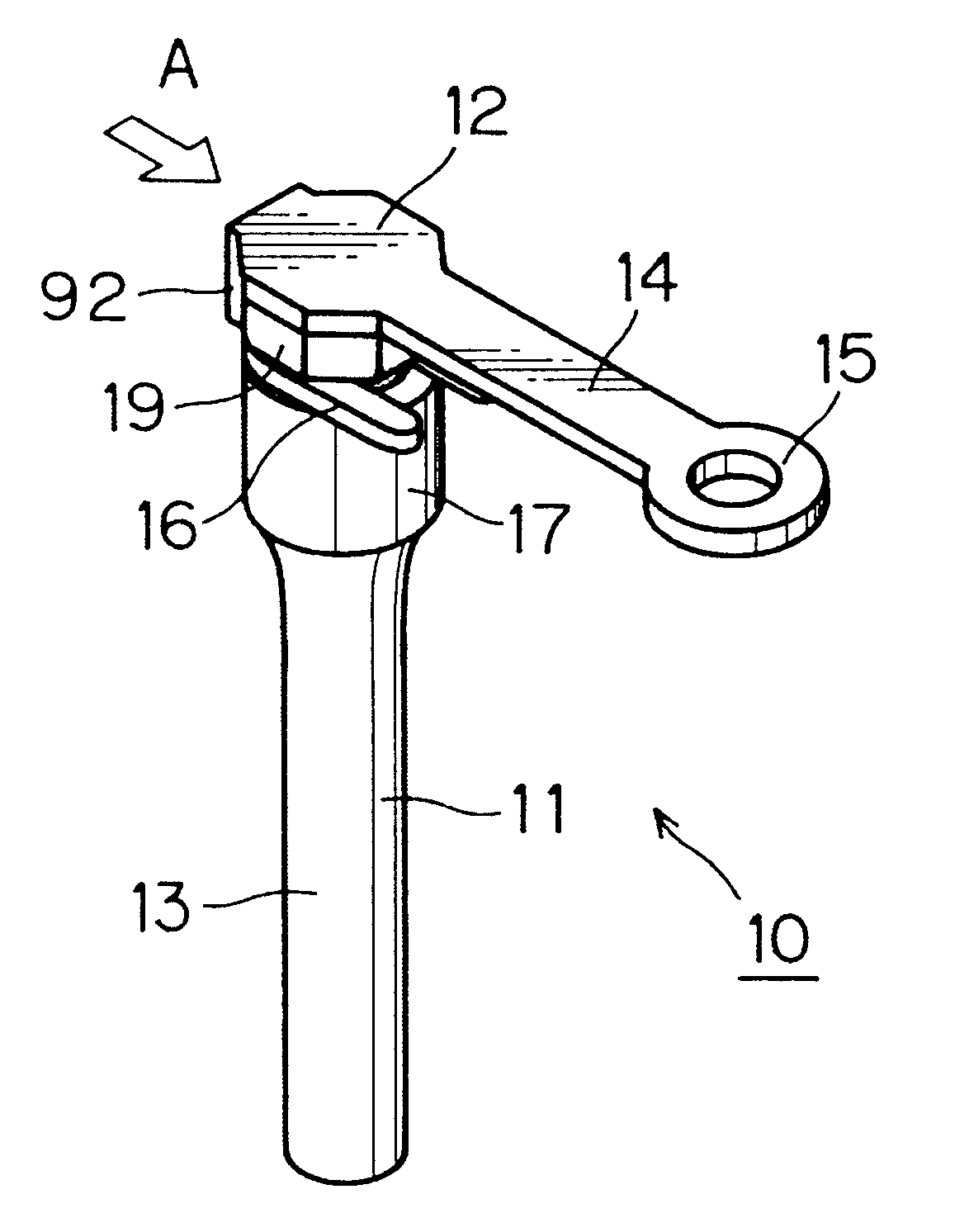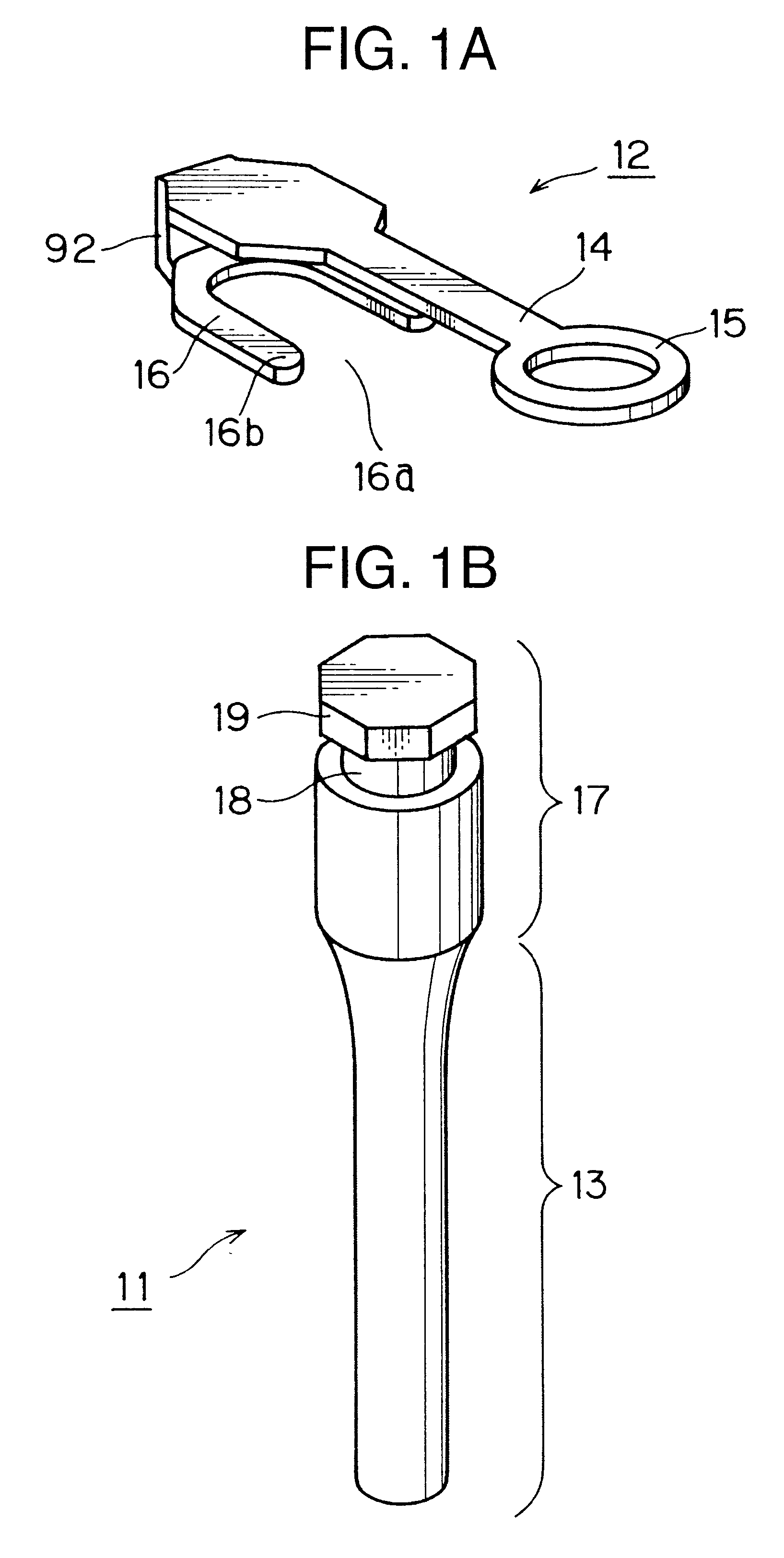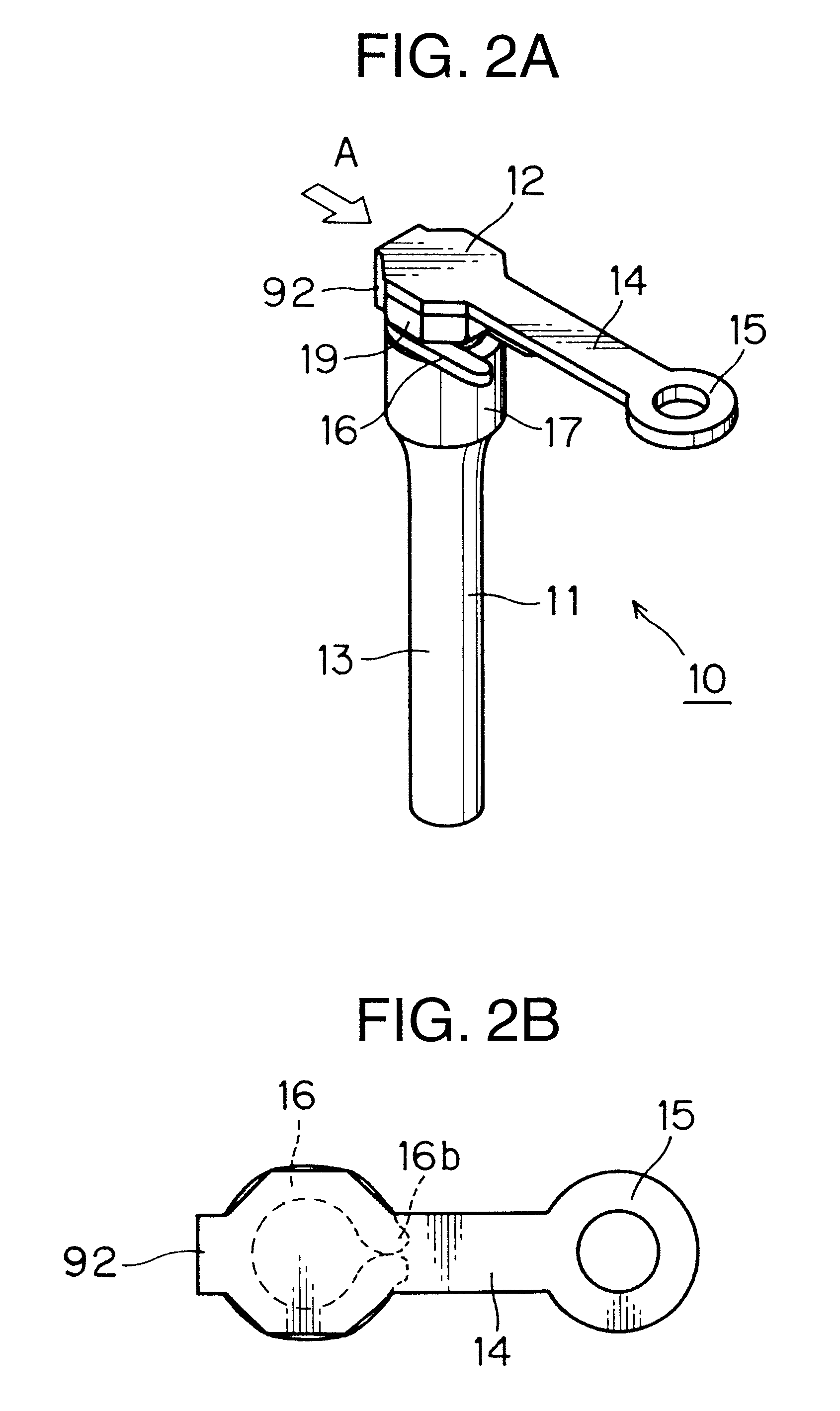Orthodontic supporting structure
a supporting structure and orthodontic technology, applied in the field of supports, can solve the problems of imposing a heavy burden on a patient, imposing considerable mental pain and stress on the patient, and too much to say that the molars do not move at all
- Summary
- Abstract
- Description
- Claims
- Application Information
AI Technical Summary
Benefits of technology
Problems solved by technology
Method used
Image
Examples
first example
of Treatment
FIG. 11 is a diagram illustrating a first example of treatment according to the invention, in which the orthodontic supporting structure 30 is implanted in a jaw bone 90 which is covered with gingival mucosa 91. In FIG. 11, elements identical or equivalent to those shown in FIGS. 1A-1B, 2 and 5A-5B are designated by the same reference numerals and a description of such elements is omitted.
After implanting the implant unit 31 in the jaw bone 90, the connecting unit 12 is fixed to the implant unit 31 in the previously described manner such that the fastening part 15 is located at a desired position. Then, an orthodontist attaches one end of a wire 93 to the fastening part 15 and the other end to a bracket, for instance, which is fixed to a tooth. As a result, a correcting force is applied to the tooth from a proper direction.
According to the invention, the orthodontic supporting structure 30 is located such that its top portion is exposed to the oral cavity and a joint bet...
second example
of Treatment
FIG. 12 is a diagram illustrating a second example of treatment according to the invention, in which the orthodontic supporting structure 30 is implanted in a jaw bone 90. In FIG. 12, elements identical or equivalent to those shown in FIGS. 1A-1B, 2, 5A-5B and 11 are designated by the same reference numerals and a description of such elements is omitted.
While the arm 14 of the connecting unit 12 extends horizontally in a straight line in the example of FIG. 11, the arm 14 may be bent in an angular or curved shape as shown in FIG. 12. Such bending of the arm 14 is possible if it is made of plastically deformable material.
If a wire 93 or the like attached to the arm 14 or to the fastening part 15 goes in contact with gingival mucosa 91 and causes discomfort or inflammation, or if it is desired to slightly adjust the position of the fastening part 15 (supporting point), it may be set apart from the gingival mucosa 91 or otherwise repositioned by adjusting the bend of the ar...
third example
of Treatment
FIG. 13 is a diagram illustrating a more practical example of orthodontic treatment which is performed for lowering a canine 96.
The implant unit 31 of the orthodontic supporting structure 30 is implanted in a jaw bone 90 in such a way that the implant unit 31 would not interfere with the root or nerves of the canine 96. Subsequently, the connecting unit 12 is fixed to the implant unit 31 while holding the fastening part 15 at a position where a supporting point is to be located. Then, one end of a rubber chain 94 is attached to the fastening part 15 of the connecting unit 12 and the other end of the rubber chain 94 is fitted to a bracket 95 which is fixed to the canine 96, such that a downward pulling force is applied to the canine 96.
Fourth and Fifth Examples of Treatment
FIG. 14 is a diagram illustrating a fourth example of treatment according to the invention, in which two pairs of teeth 99 in the upper jaw are corrected using two orthodontic supporting structures. In ...
PUM
 Login to View More
Login to View More Abstract
Description
Claims
Application Information
 Login to View More
Login to View More - R&D
- Intellectual Property
- Life Sciences
- Materials
- Tech Scout
- Unparalleled Data Quality
- Higher Quality Content
- 60% Fewer Hallucinations
Browse by: Latest US Patents, China's latest patents, Technical Efficacy Thesaurus, Application Domain, Technology Topic, Popular Technical Reports.
© 2025 PatSnap. All rights reserved.Legal|Privacy policy|Modern Slavery Act Transparency Statement|Sitemap|About US| Contact US: help@patsnap.com



